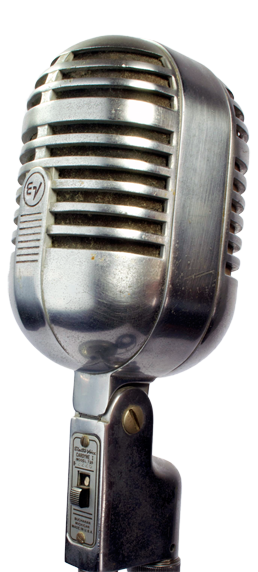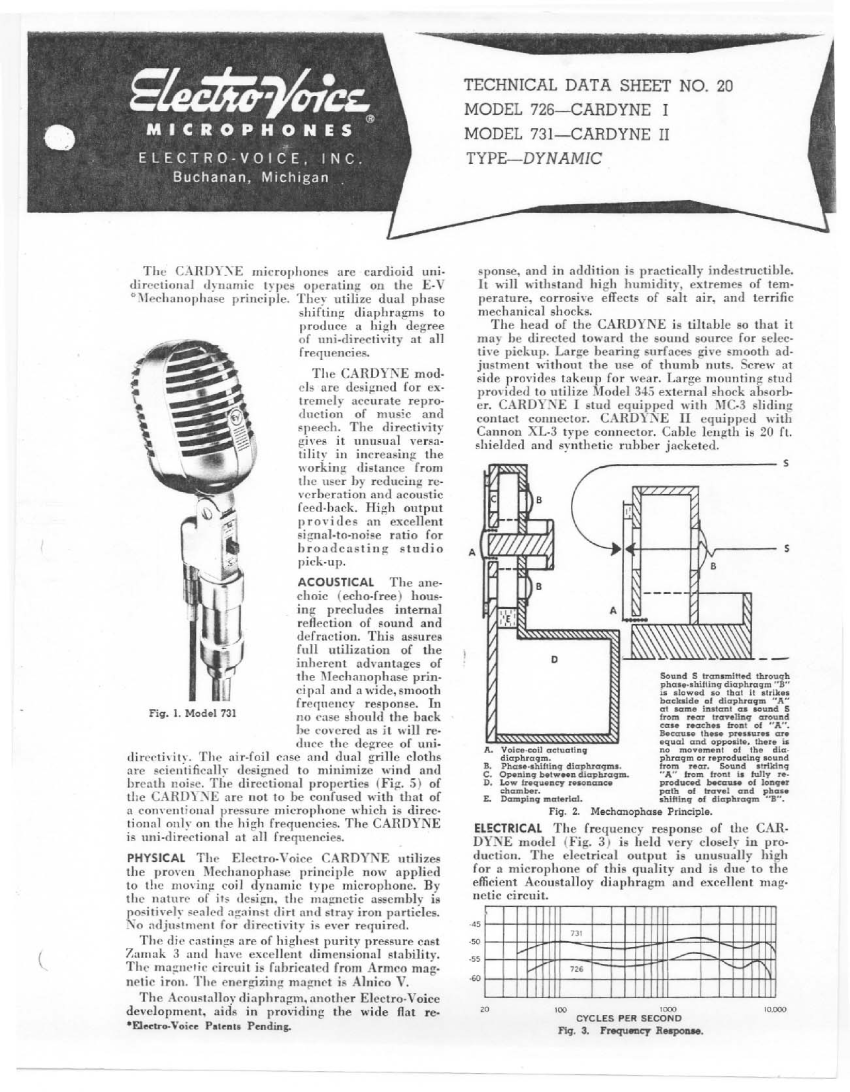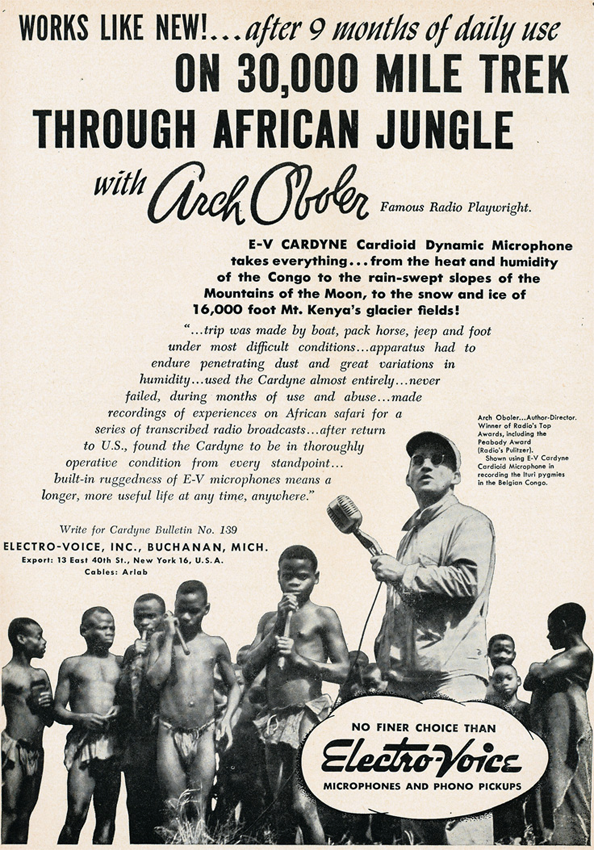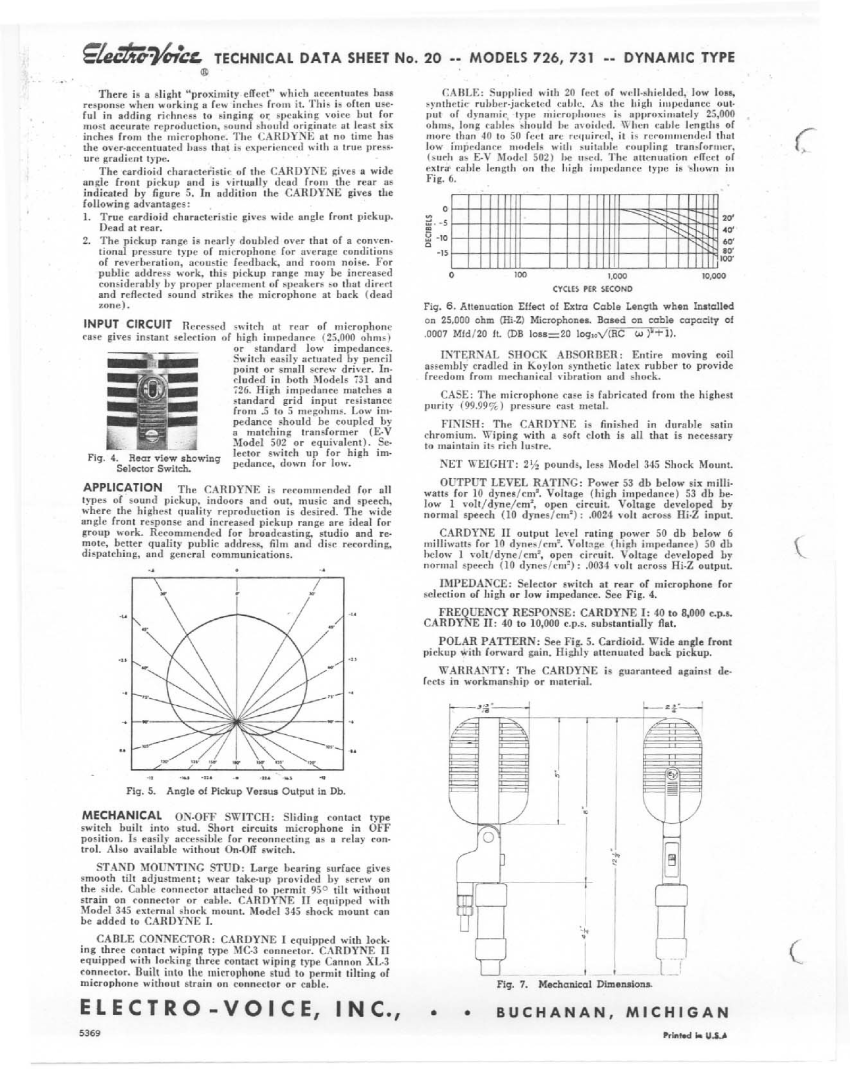|
The Electro-Voice model 726 Cardyne 1 was a dynamic microphone from the early nineteen forties. It was EV's deluxe model and both high or low-Z operation could be selected by a recessed switch at the rear.
It was one of the really 'Big Boys' of its days, with a length of 21 centimeters; one could almost hide behind it. The shape was scientifically researched to obstruct sound waves as little as possible.
The Cardyne had a cardioid (heart-shaped) directional pick up pattern, which was achieved through Electro-Voice's 'Mechanophase' system. This system had phase shifting diaphragms at the back of the capsule that nulled sound that reached both front and back (picture 3), sound from just the front was reproduced correctly, with a high output signal.
The EV 726 CARdioid DYNamic was a competitor against Shure's directive 55 'Fatboy', from 1939, but although it had great looks, it was not nearly as succesfull as Shure's iconic model 55.
In 1948 Electro-Voice presented a similair looking yet improved version of the 726: the 731 Cardyne 2, with a wider frequency response, but the company kept the less expensive 726 Cardyne 1 in their sales program as well. The M3 screw on connector of the 726 was replaced by a modern easy lockable XLR 3 on the 731.
These EV microphones are humongous and even larger than Shure's 'Fatboy', although their shape is slimmer. The appearance is impressive and very decorative, it would definitively not be overlooked; these were Electro-Voice's biggest models ever. The 726 Cardyne 1 weighed an impressive 1124 grams.
The 726 and 731 would be superseded by the legendary EV model 666, which had another system to produce a directive pick up pattern: the unique 'variable D principle'.
These and many more types feature in my book Witnesses of Words.
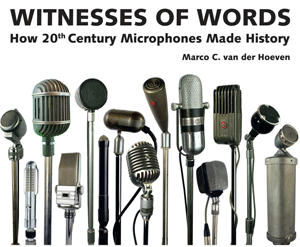
|
|
|
|
|
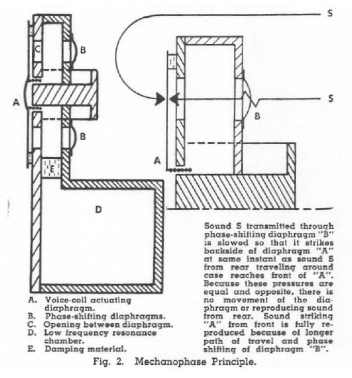
|
Top: the impressive 726 Cardyne 1
Middle: back and Mechanophase system
Below: technical sheets, sound and 1949 ad
|
|
|
|
|
|
|


 Video's
Video's Contact
Contact


